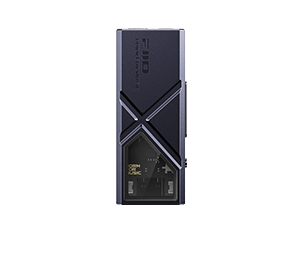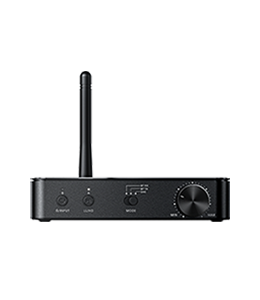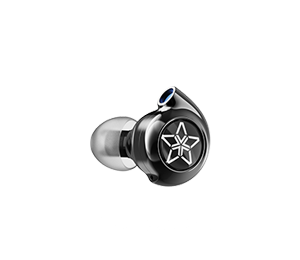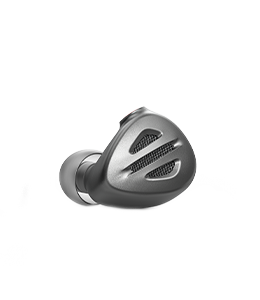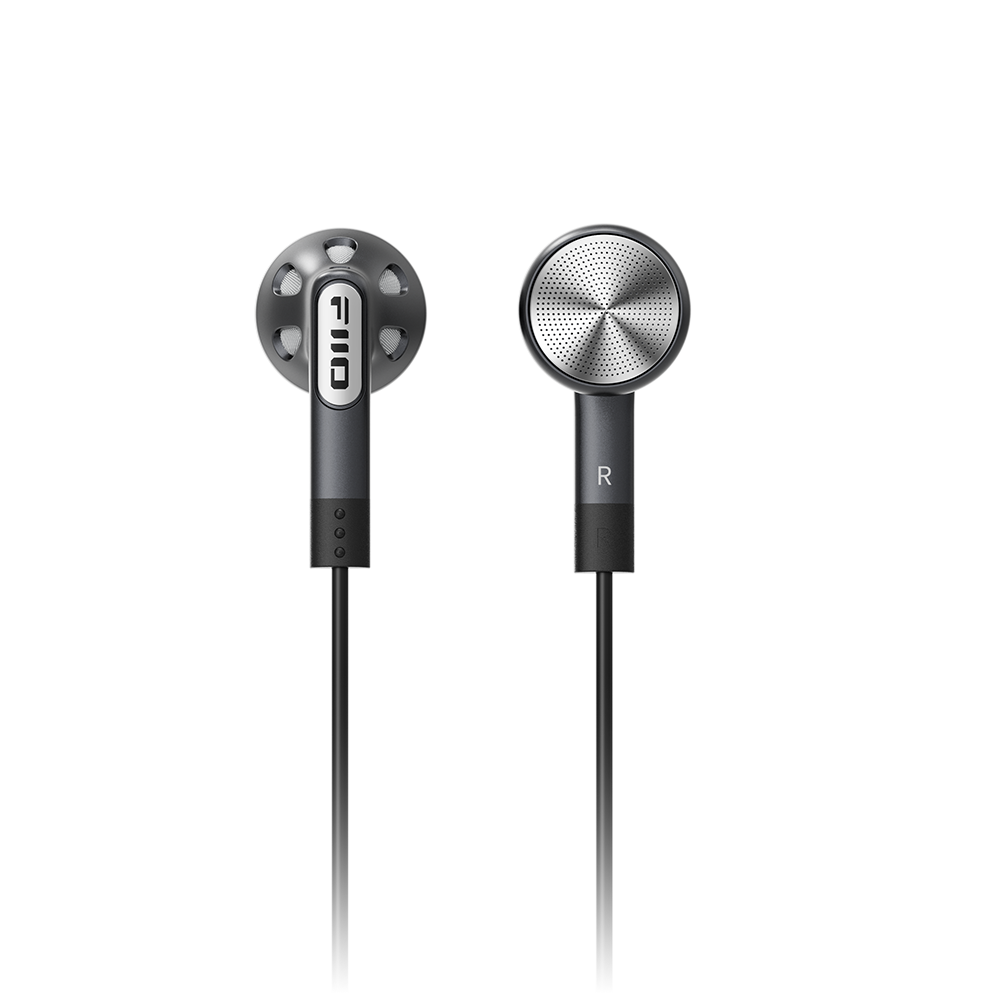Review: FiiO FH1 – All About The Tone
Author:Berkhan
Review from:Headfonia
→→ Read the original article on Headfonia:>> Click here

Disclaimer: The FiiO FH1 was sent me from FiiO directly as a review sample. The current price of this model is 74,99$. This review won't be very very detailed, as I've reviewed the F9 & F9 Pro already so there's no need to keeping it long. You can always feel free to ask your questions and state your opinions on the comments section.
INTRO
Looks like FiiO are not only interested in releasing IEMs, but also in diversifying them to appeal to larger crowds with different price levels. I think this model, the FiiO FH1, is a result of that strategy. At the same time I also think that their starter of this new series – the F9 – is slowly becoming somewhat obsolete. That’s obviously not pretty for early F9 owners, but that’s only my opinion.
Manufacturers releasing IEMs with 1 or 2 drivers is very common lately, and the FH1 is no exception. This one has 1 larger Dynamic driver + 1 Balanced Armature driver, instead of the 1+2 setup of the F9 Series. But, the BA driver is also Knowles branded, like the F9 Pro. So that means we’ll have somewhat similar quality & control of the F9 Pro. Also, it has its own distinguishing features, such as a slightly bigger dynamic bass driver and unique nozzle design. So this IEM maybe is the cheapest of the three, but it’s definitely no slouch. Let’s focus on that in the sound section though.
DESIGN & BUILD
The FiiO FH1 has the same shape as the F9 Series, but the housing is now different for both looks & material. It now has a silver elliptic frame -which looks very cool- and its made from plastic material this time around. Downgrading from full aluminum to plastic is of course not great, but I saw many IEMs made from ABS material while having much higher price brackets than the FH1. Therefore, this is not something that I can criticize, especially when this one has a lower price than the other two.
And I have to say, the housing doesn’t feel cheap in any way, and it has its own advantages like the reduced weight to have a more comfortable fit. The blue colored version looks to me the coolest, but I got a black variant to review. Compared to the F9 models, this one brings a fresh look to the table. This is all about personal taste of course but I like all these IEMs from FiiO looks-wise. Good job.

FiiO FH1
FIT
The fit and isolation is the same as the F9 and the F9 Pro. This housing shape and design is sufficient for a nice and good isolating fit, which was proven many times in the past from different brands as well. I tend to use foam tips for a snug fit and good amount of isolation. Silicone doesn’t do very good for me with these IEMs. The process of finding the best fit is always going to be a personal matter though.
CONTENT
FiiO supplies several tips with the package but it doesn’t contain the foam tips I mentioned above. Only the F9 Pro model comes with those. Even so, it’s understandable based on the lower price level. It also doesn’t have the small zipper bag which comes supplied with the F9 Pro. Actually the package is exactly the same as with the original F9: One stock cable with mic and in line controls, one 2.5mm balanced cable which sounds better than the stock cable, 6 pairs of ear tips and the carrying case which I loved from the start.
USAGE
The small improvements made on the F9 Pro are also included here: Cables have red & blue colors around the connectors and the earpieces have L&R marks which are easy to see.
An addition to the FH1 is that the inside parts of the earpieces also have blue & red colors for matching the cables with the IEMs. Pretty nice for making things easier. The stock cable works very well with smartphones, and overall the IEMs are very easy to work with.

FiiO FH1
NOZZLE
Now the new thing here is the nozzle itself. The material chosen for the nozzle is brass, which is not a regular material we see with IEMs. Certain brands used this material before, but FiiO decided to use it exclusively for the nozzle. Also, they thought using the BA driver inside the nozzle is a good idea. Let me quote them from the product page:
To achieve the highest sound quality possible, we put the Knowles balanced armature inside the sound tube (to minimize its distance to ear) made of brass (with its higher density than aluminum). All of this results in a natural, yet effortless sound.
I’ll evaluate the sound shortly, but this brass nozzle looks just beautiful and gives quite a premium look. Especially with the blue version it looks very stylish.
VIDEO
For all three latest models from FiiO, you can check out my video post below if you haven’t seen it yet. I’ve talked about all three models and their differences in terms of looks and design. Sorry in advance for the focusing, it was a one-off problem and it won’t happen again.
Continue to PAGE 2 for sound impressions
SOUND
The FiiO FH1 is a very good monitor for the money, just like the other two models in this range. But it takes a different approach to the music, and goes to the opposite side compared to F9 models.
The FH1 overall is a warmer and it’s a full bodied IEM, giving a punchy and impactful bass, good amount of mids which are better in tonality, and somewhat laid back highs. It’s a coherent and easy IEM to work with, and you can pair it with every kind of source, unless they’re not too bassy.
BASS
The bass shares the same characteristics with the F9 and F9 Pro, but I feel it has a little more rumble and punch in its hits. Actually I can say it’s a fun type of bass rather than audiophile-oriented, but when you use foam tips things get flatter and more balanced. Thankfully bass doesn’t bleed into the midrange so you can enjoy the middle part of the spectrum.
Other than slightly punchier response, everything is around the same with the F9 series. Good level of control, generous quantity and warmness, good layering for the price and good lushness. If you like those traits, than you’ll love the FH1. But I personally recommend foam tips to tame that rumbling bass.
MIDS
This is the area where things get rather different. The FH1 has lusher and thicker vocals and instruments by a notch, and that creates a less bright, warmer sound character overall. If you know my liking, than you should already have understood that I like the mids of this IEM.
To me, tonality is better with the FH1 than with the F9 Pro, so hearing that was a nice surprise in my first listening session. I wonder if it’s really the result of using a brass nozzle with the BA driver placed just inside of it, but sure thing is it feels very natural and effortless indeed.

FiiO FH1
While having a very nice and smooth presentation, the mids still are just a little behind in the stage. To me this can be solved with a DAP which has a good mid range performance, but to warn you; mids are definitely not upfront to be in your face. So the resolution and transparency are not on a very high level, as expected from the price. This is not necessarily a bad thing of course, as it creates a good staging for instance. And by the way, I should say it’s not v-shaped as much as the F9 series is.
All in all, I really liked the natural tone, separation and control of the mids. It made me more satisfied than the F9 and F9 Pro, since I love warm and sweet sounding mid range. But on the other hand the F9 Pro has more brightness and openness on its mids, not to mention a little more transparency and resolution. It all goes comes down to your personal choices.
TREBLE
To me, if you’re going to choose the F9 Pro over this, this has to be the reason. Due to its character and having one less driver, the treble of the FH1 is not the most detailed, transparent or extending. F9 Pro puts up a better performance in this regard, while the FH1 has less treble quantity and air. If your priority are cymbals, then you should go with the F9 Pro.
Treble has some amount of roll off, like the other two models, but this one has a little more roll off to me. F9 Pro in comparison, has more treble energy and detail than the FH1. The highs of the F9 Pro are also more articulated and better separated. Trebles overall are rather soft here, and have less dynamism.

FiiO FH1
TECHNICAL SUCCESSION
The FiiO FH1 puts a close performance to the F9 models in terms of technicalities. Good enough resolution, very nice separation and a wide sound stage for the price. But to me the FH1 has more depth in its stage, thanks to its bigger dynamic bass driver which is providing good deep lows. General resolution is a tad lower, because of the warmer and laid back approach (especially in treble). Dynamism takes a small hit as well, together with transparency.
The winning point of the FH1 though is its very nice tonality. I think if I would have to choose between the three models, I would go with the FH1 simply for that reason. The mids sound so good on it, it’s hard to deny this success in tonality and naturalness. In comparison, the F9 models have thinner and off the tone mid range performance. They’re more open and bright, but the FH1 has the correct position for note size and correct tones.
The driving factor of this one is similar with the other two, so it’s not a hard to drive IEM.
CONCLUSION
We have a winner. Great fit and good isolation, good content, nice build and design, all together in a sub-100 package. FiiO managed to get a great mid range performance from this IEM, thanks to the brass sound tube and Knowles BA driver right inside of the nozzle. Also, the bass hits a little harder and that’s a great thing for bass lovers.
But the whole story of this IEM is the mid range, and the tone. Therefore, while having the lowest price range between the three models, I don’t think it’s the low level performer here. In my opinion, the F9 is the least satisfying model, although still being pretty good for the money.
So in the end it’s a call between the F9 Pro and the FH1. The result will shape depending on the users’ taste. The FH1 contains an easier and more forgiving presentation together with a smooth and correct sounding mid range. The F9 Pro on the other hand, has a little more resolution, dynamism, transparency and treble extension.
The choice is yours.

FiiO FH1































